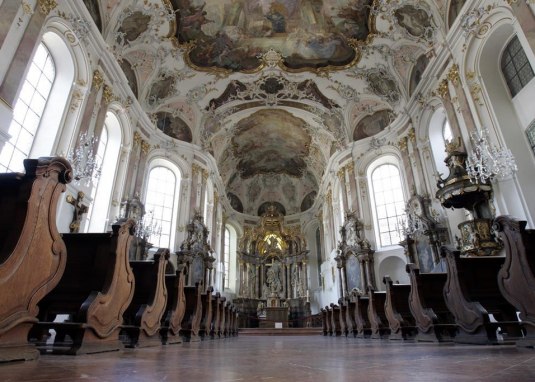Behind the red sandstone portal, a modern glass entrance reveals magnificent Rococo decorations. In Augustinerstraße, the Augustinian hermits, who had been established since 1260, had a convent until 1802. The parish church was rebuilt along with the monastery from 1768 to 1772. Since 1805, this has been the location of the Episcopal seminary.
The church's furnishings are so rich because patrons generously supported the work: The Elector did not want a "peasant church" in his residence city. The facade shows the vivid forms of the Mainfranken Baroque and a crowning of Mary by the Mainz sculptor Nikolaus Binterim.
Inside, the painter Johann Baptist Enderle from Donauwörth glorified the life of the church father Augustine in large, bright ceiling paintings. The divided organ with the central window was built by Johann Heinrich Stumm in 1773; it is one of the few surviving instruments of this organ builder dynasty. From a niche between the southern side altars smiles a linden wood sculpture from 1420: Mary with the playful Christ child - in its cheerfulness, an exceptional Gothic artwork, which is associated with the "soft style." The highly revered miraculous image was rescued in 1793 from the burning Liebfrauenkirche. In the high altar, an iconographic rarity: God the Father tears the "debt certificate of humanity" with a putto at the moment of Jesus' death.

